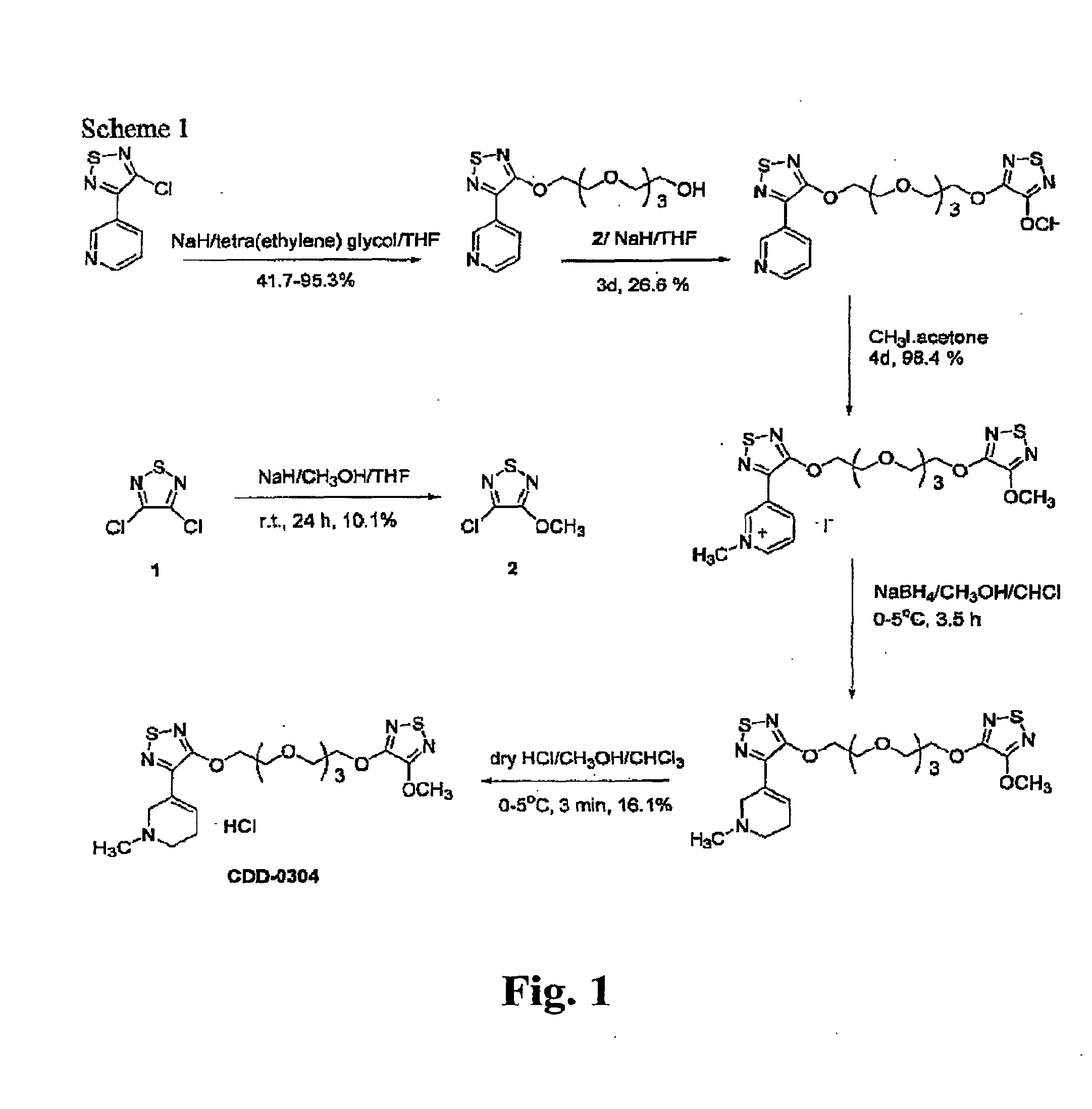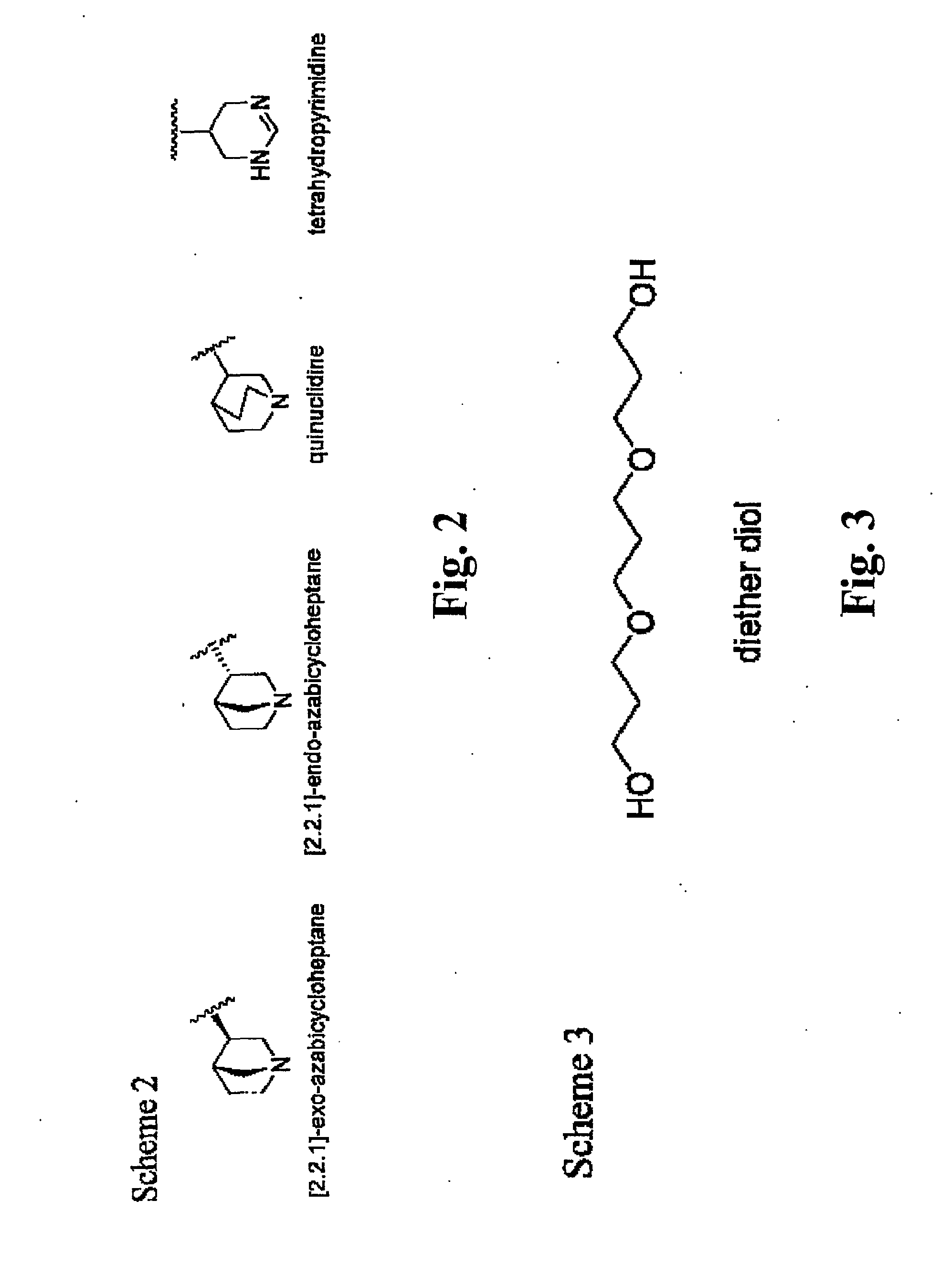Mucarinic Agonists and Methods of Use Thereof
a technology of agonists and agonists, applied in the field of agonists, can solve the problems of limited clinical utility of clozapine, many of the classical antipsychotic compounds producing unwanted side effects, and less useful in treating negative symptoms
- Summary
- Abstract
- Description
- Claims
- Application Information
AI Technical Summary
Benefits of technology
Problems solved by technology
Method used
Image
Examples
example 1
Synthesis of CDD-0304
[0057]The general scheme for the synthesis of CDD-0304 is shown in FIG. 1. The methods were adapted from those reported previously for bivalent muscarinic agonists such as CDD-0273.
example 2
Ammonium Isosteres
[0058]The tetrahydropyridine found in CDD-0304 is replaced with one of the following heterocyclic rings, including quinuclidine, [2.2.]-exo-azabicycloheptane, [2.2.1]-endo-azabicycloheptane and terahydropyrimidine, as shown in FIG. 2. The appropriate 4-butyl-sulfonyl-1,2,5-thiadiazolyl substituted heterocyclic rings are readily synthesized according to established methods, and used as starting materials for subsequent incorporation of the ethylene glycol linking group and the ester isostere.
example 3
Linking Group
[0059]The lengths of the linking group with ethylene glycol derivative is varied. For example, ethylene glycol, di(ethylene) glycol or penta(ethylene) glycol is incorporated in place of tetra(ethylene) glycol. Diether diol, an analogous linking group to tetra(ethylene) glycol having 13 atoms but with a relatively rigid property, is also useful ad a linking group used, as shown in FIG. 3.
PUM
| Property | Measurement | Unit |
|---|---|---|
| length | aaaaa | aaaaa |
| acid addition | aaaaa | aaaaa |
| acid secretion | aaaaa | aaaaa |
Abstract
Description
Claims
Application Information
 Login to View More
Login to View More - R&D
- Intellectual Property
- Life Sciences
- Materials
- Tech Scout
- Unparalleled Data Quality
- Higher Quality Content
- 60% Fewer Hallucinations
Browse by: Latest US Patents, China's latest patents, Technical Efficacy Thesaurus, Application Domain, Technology Topic, Popular Technical Reports.
© 2025 PatSnap. All rights reserved.Legal|Privacy policy|Modern Slavery Act Transparency Statement|Sitemap|About US| Contact US: help@patsnap.com



